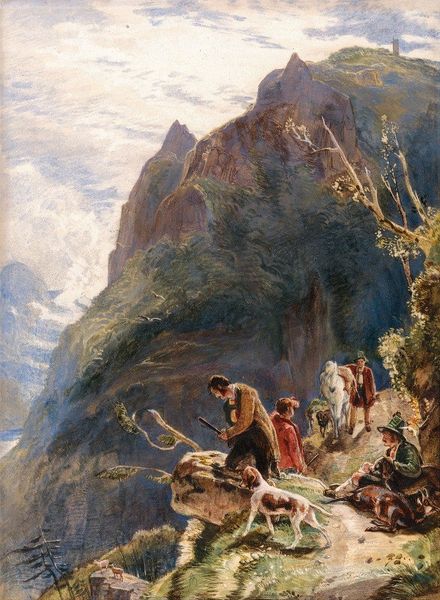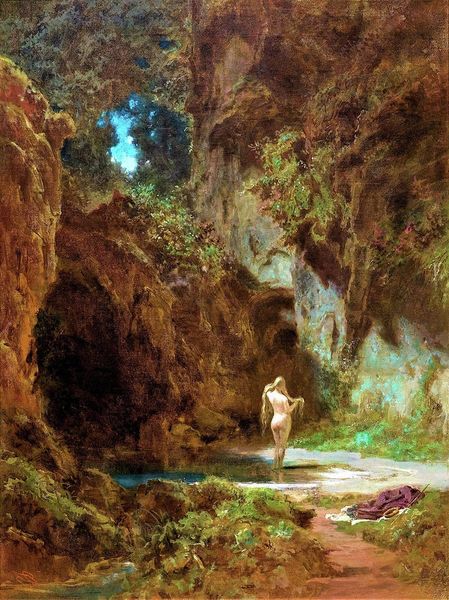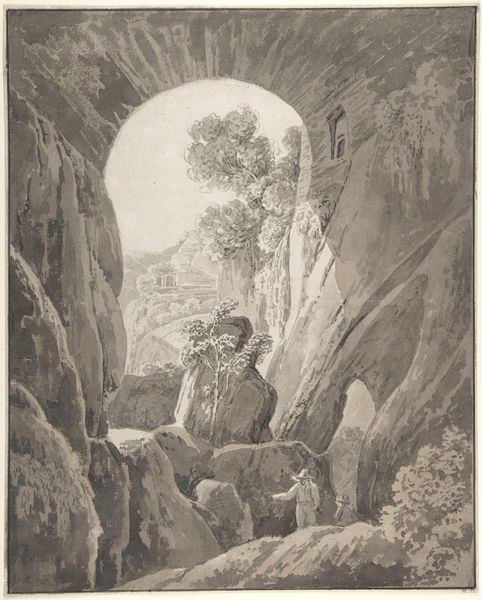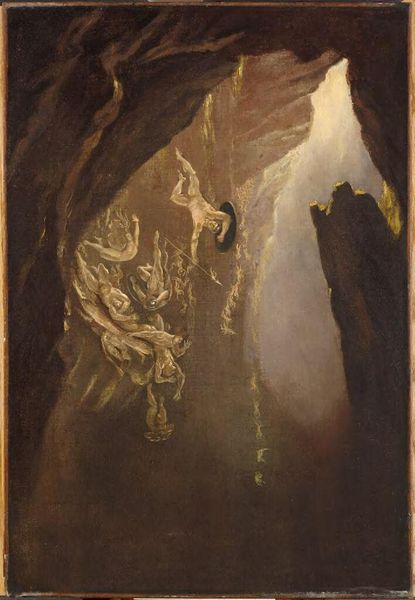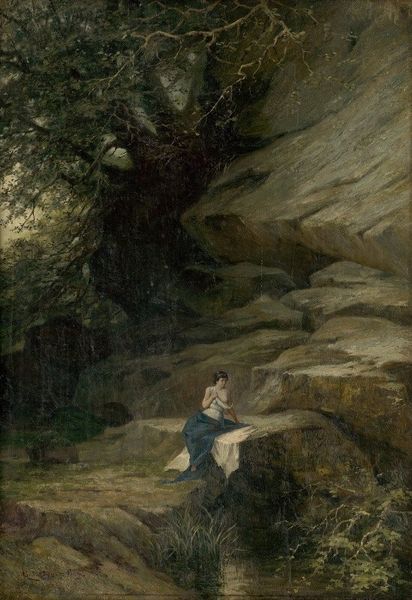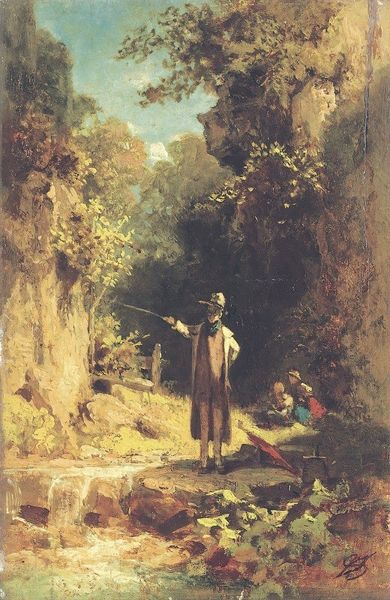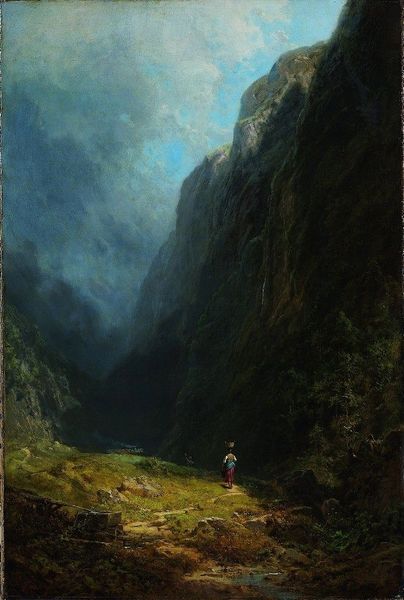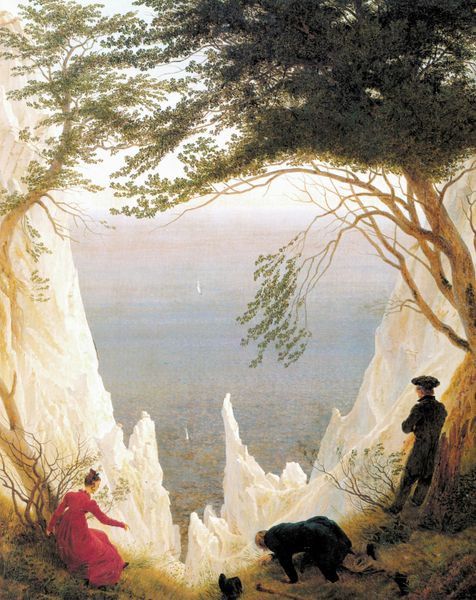
Dimensions: 44 x 34.5 cm
Copyright: Public domain
Editor: Here we have Carl Spitzweg's "The Geologist," created around 1860 using oil paint. I'm immediately struck by the contrast between the illuminated geologist and the dark, cavernous space he occupies. It's almost theatrical. What stands out to you when you look at this piece? Curator: It is precisely that contrast, that visual dichotomy, which invites exploration. The geologist himself, meticulously examining his findings, becomes a symbol of humankind's yearning to uncover hidden truths. Think of the cave not merely as a geological formation, but as a visual representation of the unconscious, of the secrets that lie buried within ourselves and the world around us. Editor: That's a really interesting take, especially the comparison to the unconscious mind! It feels like the image suggests not only physical discovery but internal exploration too. Do you see any specific cultural elements reflected in the artwork? Curator: The figure’s pose and garb, coupled with the almost reverential way he examines the rock, evoke a sense of romanticized scientific inquiry popular in the 19th century. What’s more, Spitzweg gives the man both reverence and mockery by hiding him away in what amounts to a small dark opening, creating a figure of the scholar. Do you think that reading is at all persuasive? Editor: Absolutely. I hadn't picked up on the almost humorous angle of portraying him tucked away like that, but now that you mention it, the symbolism makes total sense. It feels like I understand more about the period as well as about human curiosity after this interpretation. Curator: Yes, isn't it amazing how seemingly simple images can speak volumes about cultural attitudes and our enduring quest for knowledge? I've learnt that art challenges perceptions and brings different views to a singular creation.
Comments
No comments
Be the first to comment and join the conversation on the ultimate creative platform.
